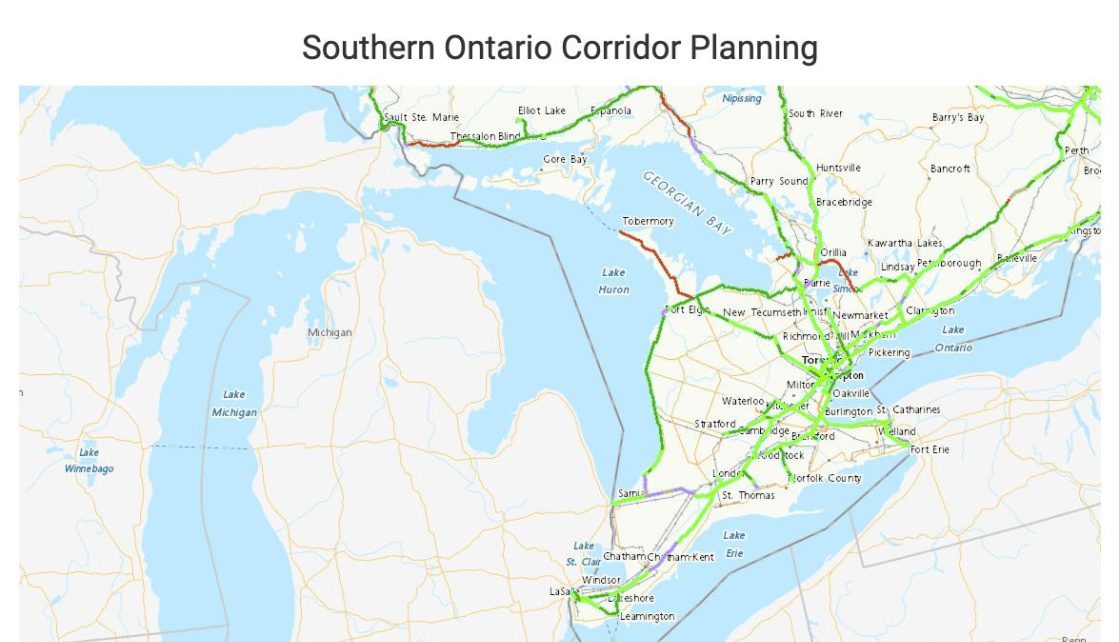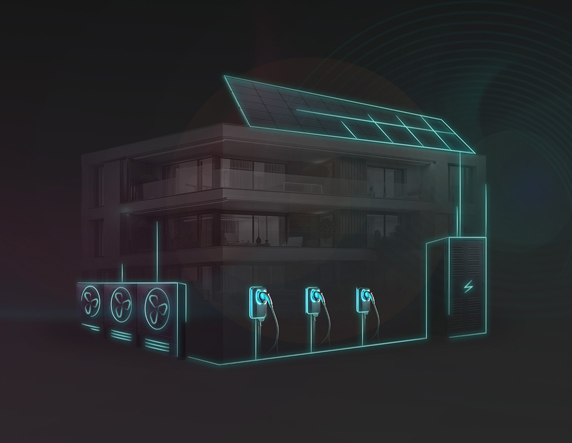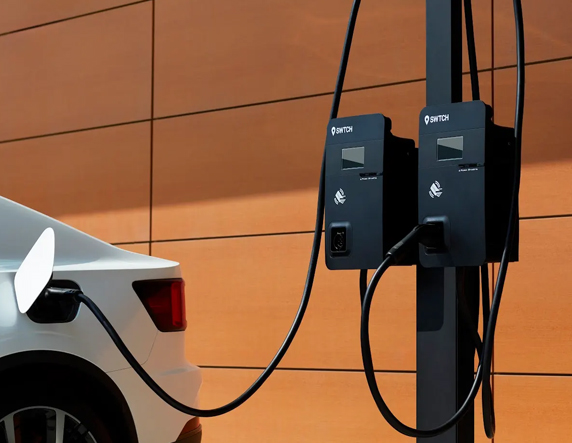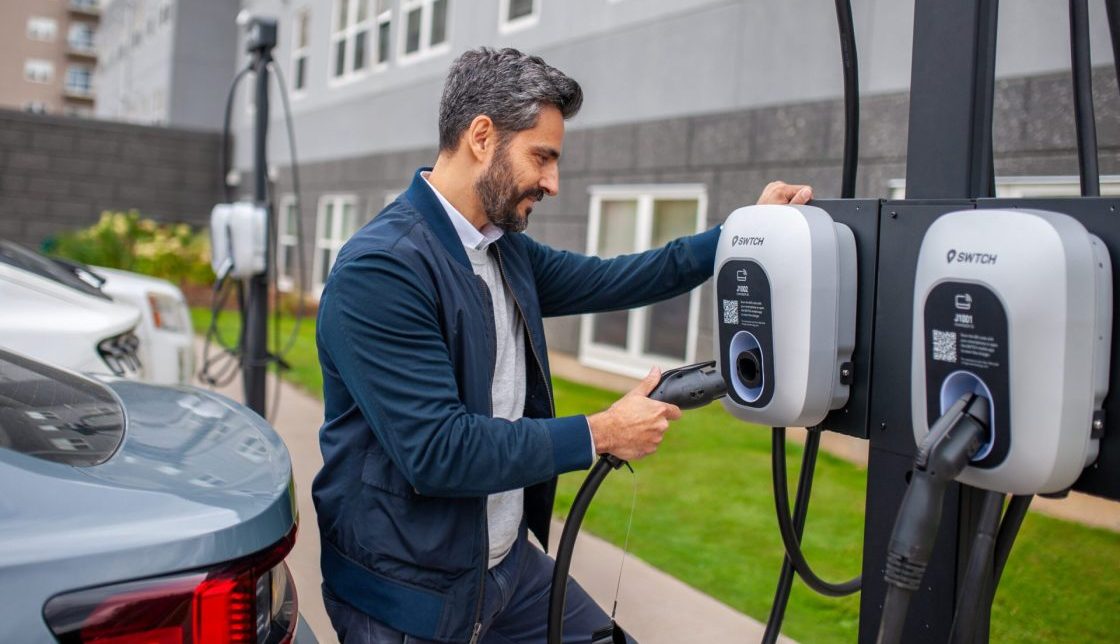Maximize Your ChargeON Application: Strategic Insights for Securing Funding
Ontario’s ChargeON program is back, offering up to $1 million per project in funding for EV charging infrastructure. New this time around: Applications are streamlined, funding levels are enhanced, and the application window is greatly condensed.
In other words, if you’re looking to secure funding, competition is going to be stiff.
That said, having tracked this program closely, I can say that taking the time to write a thoughtful application will help a great deal by positioning your project(s) as strategic priorities for the evaluators.
You can read more information about the ChargeOn program here, but for practical guidance, read through this list of priority elements to emphasize or consider when building your application.
Key Takeaways For A Winning Application
- The applications that succeed will demonstrate strategic site selection backed by NRCAN mapping data, realistic long-term operational planning, and future-proofed technology choices.
- Don’t be afraid to reference amenities nearby! Applications receive additional points when access to bathrooms is highlighted.
- Use the program’s referenced mapping tools to show evaluators their scoring criteria reflected in your project.
- Plan for 98% uptime with specific monitoring and maintenance protocols—not just promises.
- Structure your charger technology for both CCS and NACS connectors, and verify local grid capacity before finalizing site selection.
- Develop a reasonable and reliable work plan. This is important – projects with these plan receive additional points in merit criteria scoring.
- The difference between funded and unfunded projects won’t be who applies first, but who shows evaluators exactly why their approach positions Ontario for long-term EV charging success.
- Connect with OVIN early – submit your client intake form (here), connect with an OCI Business Development Manager, and develop your proposal. Your project must meet eligibility criteria and have appropriate documentation to prepare a full application.
Use the Data That Evaluators Will Use
ChargeON has made its priorities explicit through publicly available mapping tools. Use them to your advantage.
For Public Corridor projects, access the EV Charging Planning maps and confirm your proposed site falls within 1.6km of identified priority areas along major roads. Screenshot the map showing your location relative to existing chargers, and reference the specific highway or corridor your project serves in your application narrative. This visual documentation does more than prove eligibility—it shows evaluators you’ve done your homework. Public Corridor projects prefer DCFC-centred projects.
Public Community projects require a different approach. Use Forward Sortation Area (FSA) data to demonstrate low home charging access in your target community. Show population density and traffic volume data supporting your location choice, and map the distance to nearest existing public charging. These aren’t arbitrary requests—evaluators score based on these specific criteria. Public Community projects are met by a combination of L2 and DCFC projects, depending on the needs of the area.
Why this matters: You’re literally showing evaluators their own scoring criteria reflected in your site selection. This demonstrates strategic planning and makes their job easier.

Select Hardware and Software Thoughtfully
Ontario expects charging infrastructure deployed through ChargeON to serve communities for years. Applications that demonstrate long-term thinking score better.
An easy win is to specify that your project will support both CCS and NACS connectors—the North American Charging Standard, aka “Tesla charger,” is rapidly becoming universal, and dual-standard capability future-proofs your investment.
For sites with multiple chargers, include energy management systems that optimize power distribution and enable future expansion without costly electrical upgrades. Where possible, highlight Made in Canada technology, whether hardware or software platforms. SWTCH’s software platform, for example, is developed in Canada, supporting domestic technology leadership.
Design Your Site With Accessibility For All
Site design matters just as much as equipment specs. Three elements deserve particular attention:
- Pull-through access: Where appropriate for your location, design for vehicles towing trailers or those with accessibility modifications
- Washroom facilities: Identify nearby facilities in your application—this addresses a major gap in existing charging infrastructure and significantly improves user experience
- Enhanced accessibility: Design with standards that exceed minimums, including wider parking spaces, clear pathways, and accessible payment interfaces
Why this matters: Future-proofed technology and thoughtful site design signal to evaluators that you’re building infrastructure for long-term community benefit, not just meeting minimum requirements.
Demonstrate A Plan For Operational Excellence
The ChargeON program requires 98% uptime commitment. Many applicants will promise this; fewer will adequately demonstrate how they’ll achieve it.
Your application needs a comprehensive Operations & Maintenance (O&M) plan with four key components:
- Monitoring approach: 24/7 network connectivity, automated fault detection, and real-time diagnostics
- Response protocol: Who gets called, response time commitments, and escalation procedures
- Maintenance schedule: Specific intervals and procedures for preventive servicing
- Professional management: Consider managed service agreements like SWTCH Care+ rather than relying on internal staff with competing priorities
Extended warranties deserve specific attention. Specify equipment with extended warranty coverage beyond standard terms. This demonstrates long-term operational planning and reduces program risk. Projects are scored more favourably when O&M plans optimize uptime. Factor warranty costs into your budget—evaluators recognize this as sophisticated planning, not unnecessary expense.
Why this matters: A detailed O&M plan shows you understand that deploying chargers is the easy part. Operating them reliably is where many projects fail.

Strategic Project Structuring for Larger Applicants
If you’re planning multiple sites with total costs exceeding $1 million, how you structure your applications directly impacts funding success.
Note that up to 75% of eligible expenditures will be reimbursed – not total project costs.
ChargeON caps funding at $1 million per project, but you can submit multiple projects. Structure them strategically around three key principles.
First, separate Public Corridor projects from Public Community projects. Each stream has distinct evaluation criteria, and mixing them weakens both applications.
Second, group sites within the same priority zones identified in program mapping. This creates stronger need-demonstration than scattering locations across different areas.
Third, maintain use case coherence: public and retail projects should be distinct from curbside projects near multifamily developments; workplace charging should be distinct from highway charging hubs. Each application should tell a focused story about the specific problem it solves.
One critical rule: You must deploy new chargers, not replace existing equipment. While you can share site infrastructure (electrical service, parking areas), the cost-coverage levels are high enough to warrant all-new equipment. Applications proposing replacements will be rejected.
Include Grid Capacity Information
This is unglamorous but critical: Review your Local Distribution Company’s (LDC) load capacity map before finalizing site selection. Despite proof of utility engagement no longer being a requirement, understanding where capacity exists and proposing uncomplicated sites will increase your potential to be funded.
Promising projects can fail because the local electrical grid can’t support them—especially for DC fast charging. While capacity maps aren’t perfect, they identify areas with constrained capacity that would require expensive utility upgrades, locations where utility timelines would delay project completion beyond program deadlines, and sites where multiple charging projects might be competing for limited grid capacity.
Why this matters: Mentioning grid capacity review in your application signals detailed, professional preparation. Discovering capacity issues after receiving funding wastes everyone’s time.
Be Over-prepared and Get The Critical Details Right
Split-stream applicants: If you’re submitting to both Public Corridor and Public Community streams, ensure your Public Community sites are genuinely more than 1.6km from highways. Program definitions are specific, so review them carefully.
Documentation readiness matters even though the online portal reduces upfront paperwork. Have supporting documentation ready if requested during evaluation: site control agreements, vendor quotes, financial commitments. Evaluators appreciate applicants who are prepared for deeper review.
Understand and work with a partner that can support your project’s 5-year reporting requirements. Successful applicants are required to provide the following spreadsheet, on an annual basis:
- The date, time and duration of each charging session, including which charger type (L2/DCFC) and connector type (CCS/NACS/CHAdeMO) was used;
- The kWh drawn for each charging session;
- The date, time, duration and reason of any service outages or degradation (slower charging speed of ports;
- Charger uptime
Lastly, accessibility requirements directly impact funding levels. If your project won’t be accessible 24/7/365, your cost coverage drops to 25%. Unless you have compelling reasons for restricted hours, design for continuous access.

The Bottom Line
ChargeON’s enhanced funding and streamlined process will generate more applications than ever. The difference between funded and unfunded projects will be who demonstrates:
- Strategic site selection backed by program data
- Realistic operational planning for long-term reliability
- Future-proofed technology choices
- Professional preparation on grid capacity and site design
The most successful applicants will show evaluators exactly why their specific approach aligns with program priorities and positions Ontario for long-term EV charging success.
It may take a little extra work, but given the amount of funding on offer, I think it’s highly worthwhile. And, with program applications currently open, there’s no better time to start preparing than now!
If you want expert assistance in crafting the best possible application for ChargeOn, reach out to our team! We’ve secured millions in government funding for customers across North America and will be happy to assist you with yours.
Frequently Asked Questions
When does the ChargeON program open for applications? The ChargeON program opens November 3rd, 2025. Applications will be competitive, so preparation before the opening date is essential for success.
How much funding can I receive through ChargeON? ChargeON provides up to $1 million per project. You can submit multiple projects if you’re planning several sites, but each project should be strategically structured around funding stream alignment and use case coherence.
What’s the most important factor in a successful ChargeON application? Strategic site selection backed by the program’s own mapping data is critical. Use the EV Charging Planning maps to confirm your site falls within priority areas and document your location relative to existing infrastructure.
What uptime commitment does ChargeON require? ChargeON requires a 98% uptime commitment. Your application should include a detailed Operations & Maintenance plan specifying monitoring approach, response protocols, maintenance schedules, and professional management arrangements.
Should I include both CCS and NACS connectors in my project? Yes. Dual-standard capability future-proofs your investment as Tesla’s NACS becomes universal. Include both CCS and NACS connectors in your charger specifications.
What happens if my site doesn’t have 24/7 accessibility? Projects without 24/7/365 accessibility receive only 25% cost coverage compared to higher coverage for continuously accessible sites. Design for continuous access unless you have compelling reasons for restricted hours.







